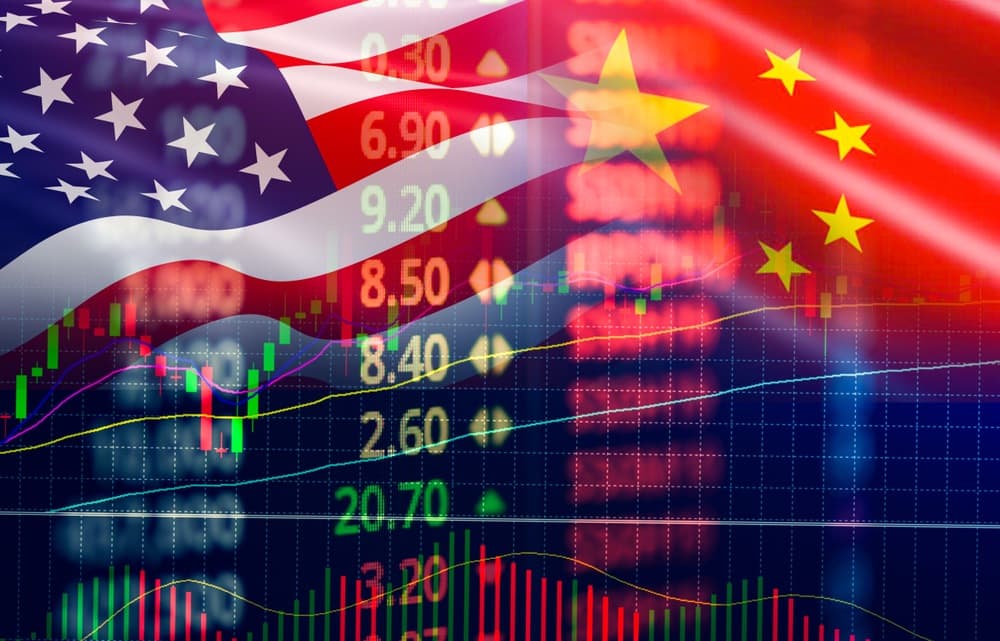Beneath the Surface
When Decent Performance Meets High Fees, Investors Suffer
July 2, 2025 • 5 minute, 57 second read

“Amateur investors who put their money in low-cost index funds can beat the so-called ‘smart money’ hedge funds charging extraordinary management and performance fees.”
– Warren Buffett

A cube of $1 million in $1 bills at the Federal Reserve Bank of Chicago’s Museum of Money
(Source: Andrew Packer)
July 2, 2025 — My adventures as a boots-on-the-ground analyst continue…
Last week, I found myself at the Morningstar Investment Conference in Chicago.
While I’ve already unpacked my bags, this conference covered a number of topics relevant to the Grey Swan community that we’ll be unpacking in the weeks to come.
That includes the defense industry, to the role that cryptocurrencies can play in your portfolio, and insightful thoughts from keynote speakers such as retired General Stanley McChrystal and investor Ron Baron.
One topic that was making the rounds? The role of private assets.
That’s the term that lumps together private equity and private credit.
I’ve written about private credit before, and have spoken to a number of fund managers in the space, including at this conference and the FutureProof conference.
Simply put, private assets are growing in popularity. But they’re often opaque.
You may know that a private equity firm bought a company, and may even see the headline price paid. But you may not know other deal terms, such as the total debt or the cost of that debt.
That makes it impossible to determine if there’s been a great deal – or if it’s a disaster waiting to happen.
It wasn’t always this way. Before I joined the financial publishing world 16 years ago, I worked for a small private equity firm. They were looking to do “roll-ups,” or take several similar businesses and buy them up.
For instance, a series of local dentist offices could be bought up. Then, by consolidating all the back-office work (marketing, billing, etc.), the firms could enjoy an economy of scale and increase their profitability.
That’s all well and good. However, after interest rates fell to zero, private equity could borrow money much more cheaply. They set their sights higher. And looked for ways to make a faster buck.
Soon, private equity became known for buying up entire companies, even well-known household firms. In 2014, for instance, the Red Lobster restaurant chain was acquired by private equity.
The private equity firm quickly loaded the company up with debt, and sold off the land underneath the restaurant for $1.5 billion.
Quality deteriorated, as cost-cutting measures became the norm. And without the asset of the land, the restaurants couldn’t pay the rent on the former space they used to own. That’s why so many locations have been shut down – and Red Lobster declared bankruptcy earlier in 2024.
That’s private equity today. It’s why many companies you frequent seem to have gotten worse. Because if they’re owned by private equity, they have.
What has the quality deteriorated? It likely comes down to too much capital chasing too few deals.
However, Wall Street isn’t resting on its laurels. They’ve found a new source of capital that could allow them to keep the party going – your retirement account.
Continued Below…
Elon’s “Project Infinity” Could Split America in TwoElon Musk is set to roll out what could be the most disruptive technology of our lifetime. A breakthrough AI project that has the potential to turn Elon into the world’s first trillionaire… While trapping everyday Americans in an economic death spiral… As things stand, most Americans are completely unprepared for what’s coming… That’s why one ex-Wall Street insider has taken it upon himself to help everyday Americans prepare. He’s identified a potential “backdoor” investment in this “project” that could help you land on the right side of this economic divide. |
The Push for Private Assets In Retirement Accounts
Today, several ETFs are getting ready to launch. Their goal? To make it into your 401(k) plan.
It’s all part of a broader integration of financial markets. A move that can make it easier to invest in privately-held companies like SpaceX before they IPO. And to allow retail investors the opportunity to benefit from the higher long-term returns that private assets hold.

Morningstar CEO Kunal Kapoor makes the case for increased access to private assets.
That’s why many financial executives, including Morningstar CEO Kunal Kapoor, were excited about this growing convergence between private and public markets.
In theory, it’s a good idea. Private equity tends to perform better than the stock market, provided you do so over time.
Private credit, a newer asset class but a rapidly growing one, also shows strong returns, as well as relatively high current income.
And if you have a retirement account, chances are you’re willing to think long-term.
Win-win, right? Not necessarily.
First, these new funds would also come with an incentive structure similar to investing in a hedge fund. That includes a higher fee than a market index ETF – think 2% compared to 0.1% (or less).
Plus, many of these funds have a hurdle rate attached to them as well. Once they clear 5% returns – which, with private credit, can be easily cleared by making deals with cash returns over 5% – additional incentive fees may kick in.
As Vanguard CEO Salim Ramji noted at the Morningstar conference, this is one area that could benefit from the “Vanguard Effect,” – where coming in with lower fees creates more competition across the industry and investors lose less of their returns to fees.

Morningstar analysts discuss the current fee structure of private assets in further detail, and how there’s significant room for improvement.
Once fees for private asset ETFs get closer to where market index ETFs trade, it may ensure investors benefit. For now, however, the push for private assets in retirement accounts should be met with caution rather than blind enthusiasm.
Ramji also notes that once those fees are knocked down, private assets “can be additive” to portfolio returns. Until then, it’s still a, “good and interesting time to invest in bonds.”
Given that U.S. Treasury bonds still offer relatively high yields over and above inflation for the first time in 15 years – and that the stock market has reflexively shaken off slowing economic data to rebound to new highs – ensuring you have sufficient bond holdings isn’t a bad idea right now.
But skip on the private asset ETFs until they can build a meaningful track record – and until you can see how they perform during a market crisis.
Andrew Packer
Grey Swan Investment Fraternity
P.S. from Andrew: For our paid-up members, I’ll have a write-up in the July issue about the latest from the defense industry following conversations with several speakers at the Morningstar conference. Stay tuned!
Plus, tomorrow, Addison and I will take stock of the first half of the year at 11 a.m. ET on Grey Swan Live!
During this week’s Live!, we’ll review the model portfolio and the big trends that have impacted stock prices and the economy during the dizzying first months of the second Trump administration.
Your thoughts? Please send them here: addison@greyswanfraternity.com




